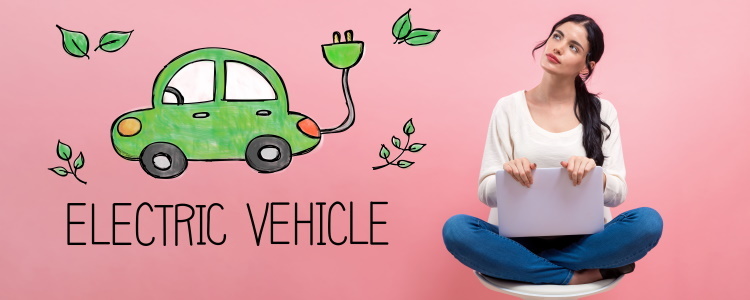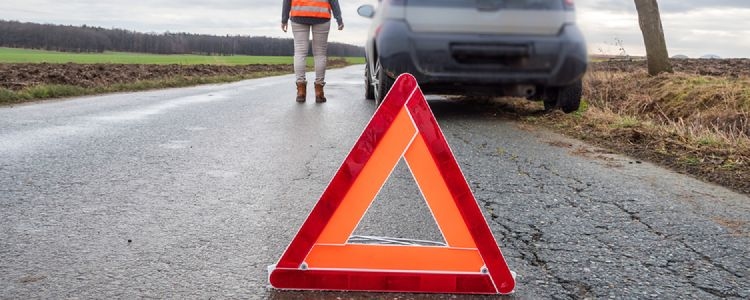The last thing you need on a spring road trip is your car breaking down. Whether you drive a standard fuel vehicle, an EV, or a hybrid, we've got six tips to make sure your vehicle is in tip-top shape before you hit the open road!
Get Moving!
After a long cold winter, it's natural for people to want to hit the road as soon as the weather gets nicer and the days start growing long. Your car might not be so eager to get moving, though, especially if it's been a while since your last scheduled maintenance.
When you're eager to get on the road, it's worth it to ensure your vehicle is up to the job. Heading out on an adventure without taking some time for TLC could mean an adventure that costs you more than you bargained for.
Whether you're a driveway do-it-yourselfer or a faithful visitor to your local mechanic, make sure to check these six tips:
1. Tires and Brakes
No matter the type of vehicle you drive you may not get very far if your tires aren't up to snuff. Tire wear happens to everyone, and it's a common reason for crashes and vehicle damage. You can pick up an inexpensive tread depth gauge nearly anywhere these days to keep in your car or rely on the old standby of the penny test.
 Tires become less safe the more they wear, and there's a minimum tread depth of 2/32 of an inch required in 42 states. If your tire tread is lower than this (or if you can see the top of Lincoln's head on a penny) it's time to replace your tires. Also, remember that tires may not wear evenly depending on how your vehicle drives, but it's recommended to get all four, or at least two, replaced at the same time for improved efficiency and handling.
Tires become less safe the more they wear, and there's a minimum tread depth of 2/32 of an inch required in 42 states. If your tire tread is lower than this (or if you can see the top of Lincoln's head on a penny) it's time to replace your tires. Also, remember that tires may not wear evenly depending on how your vehicle drives, but it's recommended to get all four, or at least two, replaced at the same time for improved efficiency and handling.
While you're getting your tires changed, rotated, or serviced in any way, think about your brakes, too. If you've been hearing a slight squeal or feel like your vehicle jerks to one side, crunches while braking, or doesn't feel like it wants to go again after a stop, then it might be time to get your brakes looked at.
2. Battery
This is a bigger deal if you drive an all-electric vehicle (EV), but no car runs without a battery. If you drive a traditional vehicle, batteries are usually widely available depending on where you are, but a battery could set you back a few hundred dollars. Make sure to pack a set of jumper cables, too!
If you drive an EV you have the added pressure of planning road trips around vehicle range and charging stations, which aren't nearly as plentiful across the country as gas stations. It's good to know that your electric car's battery is much like a phone battery, and can work less efficiently over time.
EV manufacturers recommend keeping your battery charged between 20% and 80% most of the time and running it down as far as you can between charges for normal driving. It's not a good idea to constantly top off your battery charge, just like it's also not wise to leave your car sitting with a low charge for extended periods of time.
Many of today's hybrid batteries don't have to be plugged in and recharge while you're driving around, usually through a process called regenerative braking. Hybrid engines are around 20% to 35% more fuel-efficient than standard gasoline or diesel engines, but their battery typically only lasts to around 100,000 miles and it could mean an expensive replacement.
3. Oil
An oil change is a must for a standard fuel vehicle and should be done on a regular basis. Most cars today can go a little farther than the old standby recommendation of changing your oil every three months or 3,000. Many of them even let you know when it's time to change your oil. Regular oil changes can protect your engine and help you get the most out of your vehicle.
4. Fluids
Not all cars use oil, but all of them have some kind of fluids running through them. Whether it's your coolant, wiper fluid, brakes, or your A/C refrigerant, be sure to top off before a road trip.
ACE Tip: Check your wiper blades for wear when you fill your fluid, especially after a winter of snow and ice.
5. Lights
Do you know how to change the bulbs in your vehicle's lights? Can you even do it yourself? This isn't something you may think about often, but it's a good idea to know these details when you're traveling. No one wants to be left in the dark, and driving without the proper working lights – no matter if they're headlights, brake lamps, or tail lights – it could be a safety hazard or an invitation for a ticket.
6. Protect Your Vehicle and Your Wallet
Another good thing to check out before you hit the road is your insurance coverage. Make sure that you have adequate insurance to cover anything that might happen on the road. If you own your car, you have the option to carry minimum insurance. Depending on the state you live in, though, insurance regulations can vary, so be sure as you're prepared to cover yourself from any uninsured or underinsured motorist.
If you're financing your vehicle, you're required to carry full coverage insurance, which is typically some combination of liability, collision, and comprehensive coverage. To protect yourself even more on a road trip, you could look into special insurance coverage, or see if an extended warranty covers repairs needed when you're out of your home area.
Car Not Road Trip Ready?
If your vehicle isn't ready to go roaring down the road, and no amount of repair will make it so, maybe it's time to look into getting something else. Here at Auto Credit Express, we want to help you get into the vehicle you need to make all your spring road trip dreams a reality – even if your credit is less than perfect.
We work with a nationwide network of special finance dealerships that have lenders ready to assist people in all kinds of credit situations, from no credit to bankruptcy, and you can get started toward finding one in your area today. Simply fill out our fast, free auto loan request form and get ready to get driving!
















